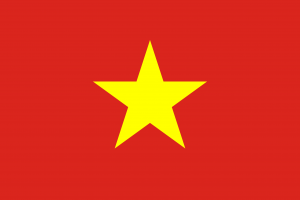Language/Vietnamese/Culture/Other-Traditional-Clothing
 Հայերէն
Հայերէն Български език
Български език 官话
官话 官話
官話 Hrvatski jezik
Hrvatski jezik Český jazyk
Český jazyk Nederlands
Nederlands English
English Suomen kieli
Suomen kieli Français
Français Deutsch
Deutsch עברית
עברית हिन्दी
हिन्दी Magyar
Magyar Bahasa Indonesia
Bahasa Indonesia فارسی
فارسی Italiano
Italiano 日本語
日本語 Қазақ тілі
Қазақ тілі 한국어
한국어 Lietuvių kalba
Lietuvių kalba Νέα Ελληνικά
Νέα Ελληνικά Şimali Azərbaycanlılar
Şimali Azərbaycanlılar Język polski
Język polski Português
Português Limba Română
Limba Română Русский язык
Русский язык Српски
Српски Español
Español العربية القياسية
العربية القياسية Svenska
Svenska Wikang Tagalog
Wikang Tagalog தமிழ்
தமிழ் ภาษาไทย
ภาษาไทย Türkçe
Türkçe Українська мова
Українська мова Urdu
Urdu
| ◀️ Ao Dai — Previous Lesson |
Other Traditional Clothing[edit | edit source]
In addition to the iconic Ao Dai, Vietnam has a rich and diverse range of traditional clothing that reflects the country's long history and cultural diversity. These garments are not only beautiful but also carry deep cultural significance. In this lesson, we will explore some of the other traditional clothing styles of Vietnam.
Non La[edit | edit source]
One of the most recognizable symbols of Vietnam is the "non la," which translates to "conical hat" in English. The non la is a traditional hat made of palm leaves and has a conical shape. It is worn by both men and women and is commonly seen in rural areas of Vietnam. The non la provides protection from the sun and rain, making it a practical and functional accessory. It is also often decorated with intricate designs and patterns, showcasing the artistic skills of the Vietnamese people.
The non la is not only a practical item but also holds cultural significance. It is associated with Vietnamese agriculture and the hardworking farmers who toil under the scorching sun. The hat has become a symbol of Vietnamese identity and is often featured in traditional dances and performances. In recent years, it has also gained international recognition and is often seen as a fashion statement, both within Vietnam and abroad.
Ao Ba Ba[edit | edit source]
Another traditional garment in Vietnam is the "ao ba ba," which is a loose-fitting, three-panel tunic. The ao ba ba is typically made of silk or cotton and is worn by both men and women, although the design and patterns may differ. The garment originated from the southern region of Vietnam and was traditionally worn by farmers and laborers due to its comfort and practicality.
The ao ba ba is characterized by its loose fit, wide sleeves, and V-shaped neckline. It is often paired with loose-fitting pants or a skirt. The garment is known for its simplicity and ease of movement, making it suitable for everyday wear in the tropical climate of Vietnam. In modern times, the ao ba ba has been reinterpreted by designers and is now often worn as a fashionable item, with various patterns and colors available.
Ao Tu Than[edit | edit source]
The "ao tu than" is a traditional dress that originated from ancient Vietnam. It is a two-panel dress that is wrapped around the body, similar to a sarong. The ao tu than is typically made of silk and features a high collar and long sleeves. It is often worn with a belt to cinch the waist and create a more fitted silhouette.
The ao tu than is an elegant and graceful garment that is associated with Vietnamese royalty and aristocracy. It was traditionally worn by noblewomen and was considered a symbol of status and wealth. The dress is often adorned with intricate embroidery and patterns, showcasing the craftsmanship of Vietnamese artisans. While the ao tu than is not commonly worn in everyday life anymore, it is still seen during special occasions and cultural events.
Five-Paneled Hat[edit | edit source]
The "five-paneled hat," also known as the "non quai thao," is a traditional hat worn by both men and women in Vietnam. As the name suggests, the hat is made of five panels of fabric that are sewn together to create a round shape. The five-paneled hat is typically made of silk or brocade and is often adorned with decorative patterns and tassels.
The five-paneled hat is not only a fashion accessory but also serves a practical purpose. It provides shade from the sun and helps to keep the head cool in the hot and humid weather of Vietnam. The hat is often worn during traditional festivals and ceremonies, as well as by performers during traditional music and dance performances.
Conclusion[edit | edit source]
Vietnam's traditional clothing reflects the rich cultural heritage of the country. From the iconic non la to the elegant ao tu than, each garment carries its own unique history and significance. By learning about these traditional clothing styles, we gain a deeper understanding of Vietnamese culture and its intricate traditions.
In the next lesson, we will continue to explore Vietnamese culture by delving into the vibrant world of Vietnamese cuisine.
Sources[edit | edit source]
Other Lessons[edit | edit source]
- Traditional Music
- Ao Dai
- Social Etiquette
- Cuisine and Dining
- Movie and Television
- Mid Autumn Festival
- Tet
- Bánh chưng ngày
- Vietnamese Values
- Names
| ◀️ Ao Dai — Previous Lesson |

